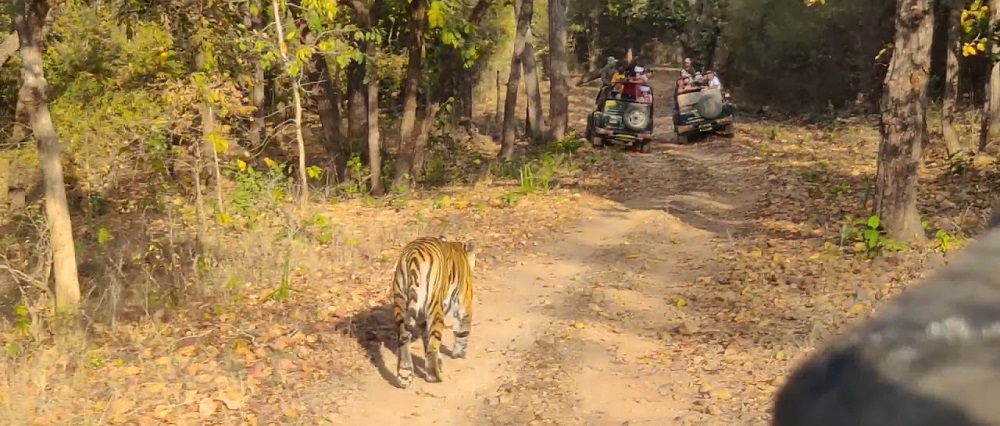In the Umaria district of Madhya Pradesh, Bandhavgarh National Park, the famed abode of Tiger, is cradled in the Vindhya and Satpura Ranges. The wide expanse of Bandhavgarh National Park with 1536 sq. km in total is an ideal destination for wildlife filmmakers, photographers and big cat lovers. Bandhavgarh boasts more than 75 tigers in its Tiger Reserve along with other members of fauna such as wild elephants, spotted deer, barking deer, jackal, macaques, Leopard, sloth bear, sambhar, Indian gaur and langur. The park records the highest count of tigers in Madhya Pradesh and is considered to be the top tiger retreat across the globe. In order to have an invigorating trip, book your safari for each zone to cover the entire area of the national park.
There are 6 safari zones in Bandhavgarh National Park in total, offering opening jeep safari to the tourists.
Core zones -
• Tala Zone
• Magadhi Zone
• Khitauli Zone
Buffer zones -
• Panpatha (Pachpedi)
• Dhamokhar
• Johila
The months from November to March are the Best time to visit Bandhavgarh. Winters mark the peak tourist season as the summers come with unbearable heat and monsoons are associated with extreme humidity.
Here in this article, we will discuss the buffer area, Dhamokar Safari Zone.
This zone is the extended area of the Magadhi Core Zone and 14 km away from the Tala Core Zone. The entry and exit gates lie in Mahaman village and Parasi village respectively.
After covering the core zones and done with tiger spotting, Dhamokar Safari serves you with frequent sights of deers, sambhars, chital and wild boars. Dhamokar zone is opened throughout the year but the entry timings vary according to the seasons. The area remains closed on every wednesday evening and on Holi.
The safari route of Dhamokar zone begins from Mahaman, and all the way through Jamuna → Jhanjh → Mudgudi → Kehrawah → Kadewaha → Kudarmada → sahu →Tail → Sehimaada → Madehavah → Kalwahdhaar and concludes in Badawar.
Khadewaha grassland is the most visited spot to witness the dense wildlife. Other tourist attractions of the place include Mudgudi dam and the natural caves.
Dhamokar and Jamunia : These areas are home to Deers, Chital, Sambhar, Wild boar and a densely populated area of a plenty of species of the birds. Jamunia is quite near to Mardari and Gohni Village.
Jhaanjh: The significance of this area lies in being worshipped by the villagers. The literal meaning of the place is anger and is believed to be the abode of a saint named Jhanjh, who fulfilled wishes of the villagers. The villagers have reported frequent tiger movement in this area and is a spot of great tourist interest with picturesque scenery. One can also get to see waterfalls and slow moving rivers at Jhaanjh.
Mudgudi: The Mudgudi dam, which is the home to several bird species, is a top tourist attraction of the area. Throughout the year, the dam is filled with water. Projects for walking treks are probably in progress to enhance tourism especially for bird watchers.
Kerawah: Close to Badrehal village, Kerawah is famous for wild banana trees that are said to be more than 70 years old. The spot of Kerha River’s origin under the trees is a popular sight here. The river flowing through the open fields is a picture perfect scenery for the visitors.
Kadewaha & Madehavah: These two areas share the regions with Magadhi Core area with increased chances of spotting wildlife due to large grasslands.
Hundaarmaada & Sehimaada: These areas attract a lot of tourists due to the natural caves which are a retreat to porcupines and hyenas.
Kalwahdhaar: The topography of this area is popular for being the abode of a lot of general wildlife.
Badawar: Your safari for Dhamokar zone ends here. The exit gate moves out to the Tala Umaria road.

